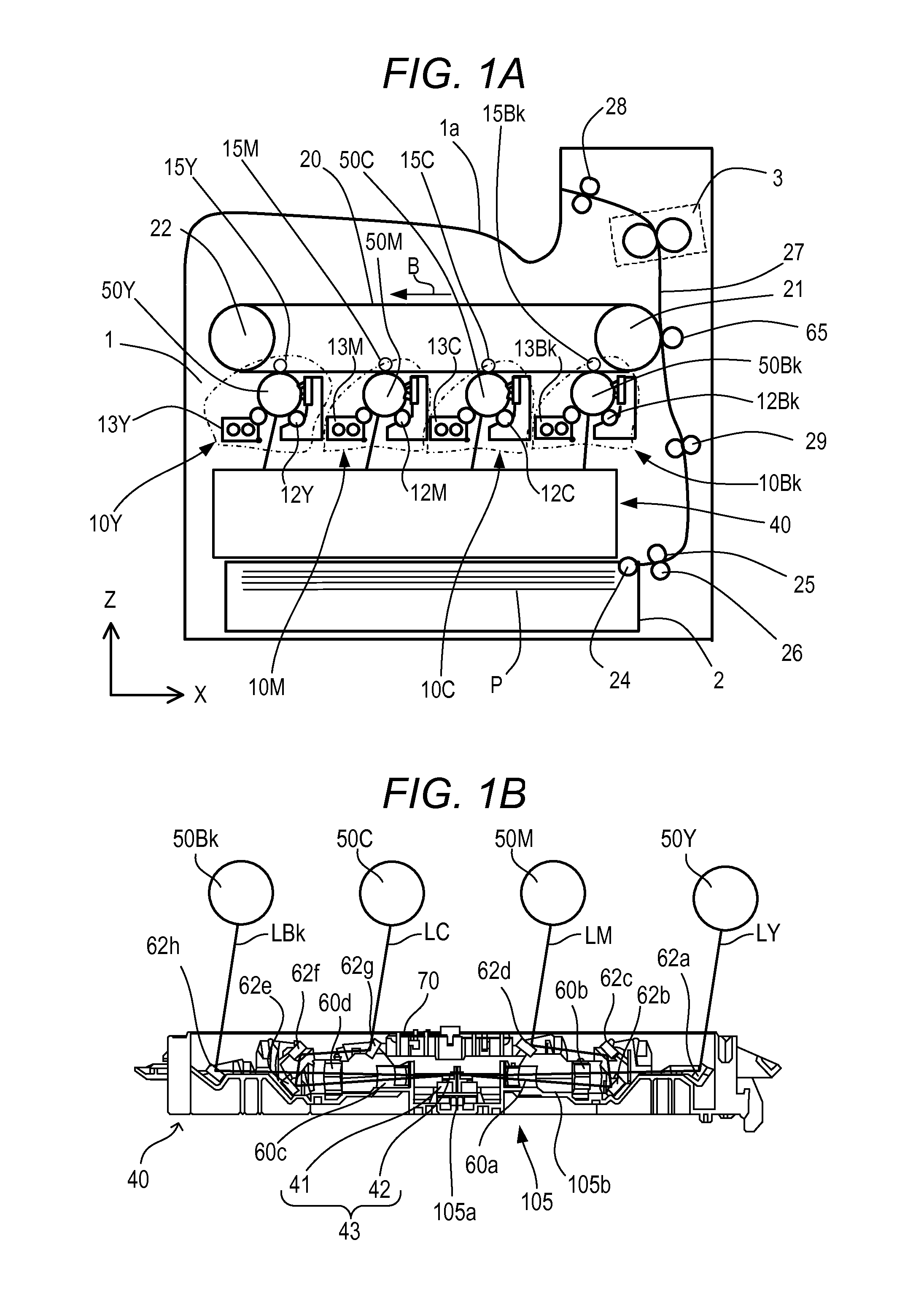Light scanning apparatus
a scanning apparatus and light technology, applied in the direction of electrographic process apparatus, mounting, instruments, etc., can solve the problems of non-uniform temperature distribution, low thermal conductivity coefficient of resin optical boxes, and inability to meet the needs of the user, so as to reduce the deformation of optical boxes and simple configuration
- Summary
- Abstract
- Description
- Claims
- Application Information
AI Technical Summary
Benefits of technology
Problems solved by technology
Method used
Image
Examples
first embodiment
Configuration of Image Forming Apparatus
[0025]The configuration of an image forming apparatus according to a first embodiment will be described. FIG. 1A is a schematic structural view illustrating an entire configuration of a tandem type color laser beam printer of the embodiment. The laser beam printer (hereinafter referred to simply as “printer”) includes four image forming engines (image forming portions) 10Y, 10M, 10C, and 10Bk (indicated by dashed-dotted lines) configured to form toner images of respective colors: yellow (Y), magenta (M), cyan (C), and black (Bk). Further, the printer includes an intermediate transfer belt 20 onto which a toner image is transferred from each of the image forming engines 10Y, 10M, 10C, 10Bk. Then, the printer is configured in such a manner that the toner images multi-transferred onto the intermediate transfer belt 20 are transferred onto a recording sheet P serving as a recording medium to form a full-color image.
[0026]The intermediate transfer ...
second embodiment
Configuration of Stepped Portion
[0070]FIG. 7 is a view illustrating the configuration of a stepped portion 168 of a second embodiment. A stepped portion 168A and a stepped portion 168B of the embodiment are configured so that the thickness of each wall forming the stepped portions 168A and 168B is non-uniform. In the embodiment, in the stepped portion 168B, a thickness of portions 168B1 perpendicular to the bottom wall 105a of the optical box 105 is thinner than a thickness of portions 168B2 parallel to the bottom wall 105a of the optical box 105. Note that, the portion 168B1 corresponds to the first wall 68B1 of the first embodiment, and the portion 168B2 corresponds to the second wall 68B2 of the first embodiment. Similarly, in the stepped portion 168A, a thickness of first walls 168A1 corresponding to the first wall 68A1 of the first embodiment is thinner than a thickness of second walls 168A2 corresponding to the second wall 68A2 of the first embodiment. With such a configuratio...
PUM
 Login to View More
Login to View More Abstract
Description
Claims
Application Information
 Login to View More
Login to View More - R&D
- Intellectual Property
- Life Sciences
- Materials
- Tech Scout
- Unparalleled Data Quality
- Higher Quality Content
- 60% Fewer Hallucinations
Browse by: Latest US Patents, China's latest patents, Technical Efficacy Thesaurus, Application Domain, Technology Topic, Popular Technical Reports.
© 2025 PatSnap. All rights reserved.Legal|Privacy policy|Modern Slavery Act Transparency Statement|Sitemap|About US| Contact US: help@patsnap.com



